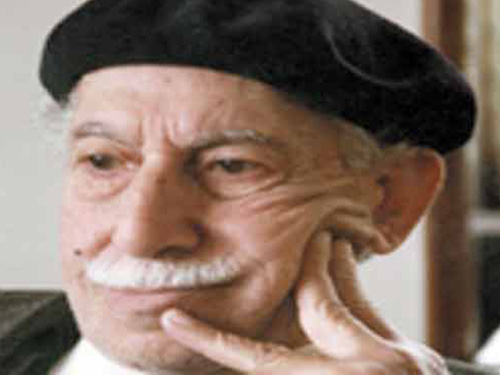Life on the moon, a tortoise that carries the earth on its back and the rhetorical question: Chicken or egg? are all part of Basim Magdy’s latest exhibition
A famous scientist once gave a public lecture explaining that the earth revolves around the sun, which in turn rotates around the center of the Milky Way. By the end of his presentation, an old woman from the audience attacked his theory. She claimed that the earth was flat and was carried on the back of a giant tortoise. Asked what was carrying the tortoise, she answered that it was turtles all the way down. This anecdote was first introduced by British physicist Stephen Hawking in 1988 as a metaphor for the circular causality or chicken and egg problem. Intrigued by the idea of knowledge creation and validation, Egyptian artist, Basim Magdy cites the anecdote as the title and introduction to his latest work, which is shown at the Townhouse Gallery of contemporary art as part of the Where Are You? group exhibition.
In Turtles All the Way Down, Magdy presents a history of human knowledge or rather a lack of knowledge through an installation of video, drawing, photography and collected items. He questions the constructs of our knowledge of the universe by bringing together a number of historical events that involve some level of fiction. Along with the turtles’ theory, he discusses the great moon hoax of 1835, in which the New York Sun published an article on the discovery of life on the moon, drawing a vivid picture of lunar creatures and landscape. Acclaimed by readers, the false news gradually spread across continents through use of the telegraph. Therefore, it constituted part of the public’s perception of scientific knowledge for some time. People even suggested sending a telescope to the moon so that the lunar creatures can look back at us as well. Magdy then presents Edwin Hubble’s theory about the expansion of the universe, which suggests the impossibility of acquiring real knowledge about the creation of the universe. Finally, he proposes analyzing a meteorite coming from outside the solar system as the sole means to break the genetic code of the universe and know the history of our planet. Turtles All the Way Down is by no means an educational or documentary project. Magdy preserves the artistic value of the work by creatively playing with the narrative and footage and juxtaposing the video with the pieces constituting the first part of the installation.
Magdy likes to explore the space between reality and fiction in his work. This approach allows him to introduce different elements and layers to create confusion for the audience. With this, he hopes to instigate critical thinking and questioning of what is taken for granted. For instance, the meteorite proposal he makes is implausible since no meteorite from outside the solar system ever came to planet earth. “We actually have no knowledge of what lies outside of the solar system,” explained Magdy. His work is carefully designed, yet leaves space for the audience’s personal intellect, interpretation and questioning. Magdy also relies on humor in his work through the selection of topics and techniques. In the first half of the installation, Magdy presents Hubble’s theory through a Polaroid picture of a man blowing a balloon with small stars dotted on it. The turtle’s theory is visually portrayed through an animated painting of turtles carrying the planet. He sees absurdity and humor as he motivates the audience to engage with the work and try to decipher it. “When the audience starts smiling, it means they will remember the work and reflect on it,” he said. Many artists rely on triggering emotions to connect with the audience; Magdy prefers humor to sadness. The work seems absurd at first sight; however, as one goes through the installation, the viewer starts to see the work in a different way, playfully drawing relationships between the pieces.
Magdy is not interested in science per se; he sees science as our main form of knowledge. “We trust it although it is constantly changing. We trust it because we do not know like when we go to a physician,” explained Magdy. What really interests him are the ways in which human perception is shaped and informed. He has been tackling this notion through various approaches and media since he graduated in 2000 from the Faculty of Fine Arts at Helwan University. For instance, he previously addressed the topic by discussing mass media as a source of information. As a visual artist living in Basel, he abstains from stereotypical themes expected from Middle Eastern, African or Muslim artists. Instead, he addresses topics from a universal approach, tackling a vast array of issues in a creative and inclusive manner.
Where Are You? is exhibited at the Townhouse Gallery of contemporary art from November 1 – 22, 2009
10 Nabarawy Street, Downtown, Cairo




